555 Integrated Timer. Traveling the Data sheet
 Once, just some twenty years ago, almost all electronic equipment, both domestic and industrial, was domestically produced. Accordingly, the entire elemental base - transistors, microcircuits, diodes, resistors, was used domestic.
Once, just some twenty years ago, almost all electronic equipment, both domestic and industrial, was domestically produced. Accordingly, the entire elemental base - transistors, microcircuits, diodes, resistors, was used domestic.
To understand this, albeit not very large by modern standards, reference books were issued. This literature was so scarce that, in current terms, it should be called a bestseller: in bookstores, all literature on electronics was sold out instantly. The purchasers of these books were mainly radio amateurs and repair engineers.
Currently, all electronics are developed and manufactured abroad, so the entire elemental base is also “from there”. This is noticeable already at the stage of acquiring radio components on radio markets and in online stores. If you are looking for, for example, KR1006VI1, then helpful sellers will certainly offer ...
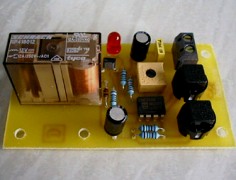 The path to amateur radio begins, as a rule, with an attempt to assemble simple circuits. If immediately after assembly the circuit begins to show signs of life - blinking, beeping, clicking or talking, then the path to amateur radio is almost open. As for the “talk”, most likely, it will not work right away, for this you will have to read a lot of books, solder and set up a number of circuits, maybe burn a large or small bunch of parts (preferably a small one).
The path to amateur radio begins, as a rule, with an attempt to assemble simple circuits. If immediately after assembly the circuit begins to show signs of life - blinking, beeping, clicking or talking, then the path to amateur radio is almost open. As for the “talk”, most likely, it will not work right away, for this you will have to read a lot of books, solder and set up a number of circuits, maybe burn a large or small bunch of parts (preferably a small one).
But flashers and tweeters are obtained from almost everyone at once. And a better element than the NE555 integrated timer simply cannot be found for these experiments. First, let's look at the generator circuits, but before that, let's turn to the proprietary documentation - DATA SHEET. First of all, pay attention to the graphical outline of the timer, which is shown in the figure. And figure 2 shows the image of a timer from the domestic directory ...
Integrated timer NE555 - history, design and operation
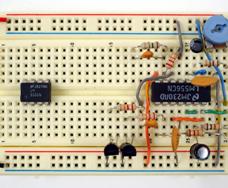 One of the legends of electronics is the NE555 integrated timer chip. It was developed back in 1972, so now in the last 2012, it turned exactly 40 years old. Such longevity is far from every chip and not even every transistor can be proud of. So what is so special about this microcircuit, which has three fives in its marking?
One of the legends of electronics is the NE555 integrated timer chip. It was developed back in 1972, so now in the last 2012, it turned exactly 40 years old. Such longevity is far from every chip and not even every transistor can be proud of. So what is so special about this microcircuit, which has three fives in its marking?
Signetics launched the serial production of NE555 exactly one year after it was developed by Hans R. Kamensind. The most amazing thing in this story was that at that time Kamensind was practically unemployed: he quit PR Mallory, but did not manage to get anywhere. In fact, it was a “homework”.
The chip saw the light of the day and gained so much fame and popularity thanks to the efforts of Signetics manager Art Fury. The most interesting thing is that the microcircuit has not lost its relevance to this day ...
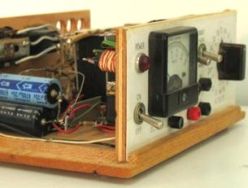 In terms of everything that was said above, the most reasonable and least costly is the manufacture of a transformer power supply. A suitable ready-made transformer for powering semiconductor structures can be selected from old tape recorders, tube televisions, three-program loudspeakers and other obsolete equipment. Ready-made network transformers are sold in radio markets and in online stores. You can always find the right option.
In terms of everything that was said above, the most reasonable and least costly is the manufacture of a transformer power supply. A suitable ready-made transformer for powering semiconductor structures can be selected from old tape recorders, tube televisions, three-program loudspeakers and other obsolete equipment. Ready-made network transformers are sold in radio markets and in online stores. You can always find the right option.
Externally, the transformer is a W-shaped core made of sheets of special transformer steel. On the core is a plastic or cardboard frame on which the windings are located. The plates are usually varnished so that there is no electrical contact between them. In this way they fight eddy currents or Foucault currents.These currents just warm the core, it's just a loss. For the same purposes, transformer iron is made ...
Power supplies for electronic devices - device and principle of operation of the main circuits
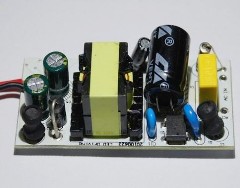 Electronic devices can be divided into two groups: mobile and stationary. The first of them use the so-called primary power sources, - galvanic batteries or accumulators that have a supply of electricity.
Electronic devices can be divided into two groups: mobile and stationary. The first of them use the so-called primary power sources, - galvanic batteries or accumulators that have a supply of electricity.
It immediately recalls mobile phones, cameras, remote controls and many other portable devices. In this case, rechargeable batteries and batteries are beyond competition, since there is simply nothing to replace them with. The only inconvenience, the cost of mobility is that the duration of such devices is limited by the capacity of the batteries, and, as a rule, is small. An exception to this rule are, perhaps, watches. Their energy consumption is very low, which is incorporated at the design stage, so the clock can go on a single battery for a whole year, or even more. Stationary devices, as a rule, receive power from secondary sources ...
DIY remote control repair. Part 2. Repair Tips
 The first part of the article told about the history of the emergence and development of remote controls (remote control) for controlling household television equipment.
The first part of the article told about the history of the emergence and development of remote controls (remote control) for controlling household television equipment.
Despite all the technological breakthroughs, increasing the speed and number of teams, improving the design and noise immunity of the remote control, this is perhaps the most vulnerable node of the body and video equipment. It is he who gradually or immediately ceases to work, leading the hosts to bewilderment. Next, various typical malfunctions of remote controls and methods for their elimination will be considered.
The TV does not respond to any of the buttons on the remote control. The question immediately arises - what to do and who is to blame. Undoubtedly, it is necessary to start the verification with what is simpler, namely with the remote control. First of all, you need to check if the remote control works at all. It is very easy to do. It is enough to bring the remote control LED to the camera lens ...
DIY remote control repair. Part 1. Development History and Remote Control Device
 Remember how in the cartoon “three from Prostokvashino”, Uncle Fedor’s mother said: “I’m so tired at work that I can’t even watch TV!” Apparently, this phrase is the answer to the question why all modern household equipment has infrared remote controls (RC). But, if you look, it all started much earlier.
Remember how in the cartoon “three from Prostokvashino”, Uncle Fedor’s mother said: “I’m so tired at work that I can’t even watch TV!” Apparently, this phrase is the answer to the question why all modern household equipment has infrared remote controls (RC). But, if you look, it all started much earlier.
The first work on remote control was carried out by the Germans in the late 30s of the twentieth century, even before the outbreak of World War II. The object of automation was a tube receiver. The control panel was a separate metal panel with buttons. Pressing the button triggered the actuator, - relay, electromagnet or motor. The connection between such a remote control and the receiver was made by a multicore cable, which still tied the listener to a specific place. Similar remotes were in the Soviet first-class tube TVs ...
How to make a do-it-yourself time relay
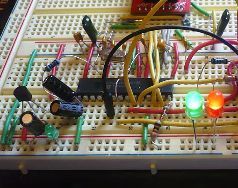 What is a time relay? The algorithm of the time relay is quite simple, but sometimes it can cause admiration. If we recall the old washing machines, which were affectionately called the "bucket with a motor", then the action of the timer was very clear: they turned the knob a few ticks, something started to tick inside, and the engine started.
What is a time relay? The algorithm of the time relay is quite simple, but sometimes it can cause admiration. If we recall the old washing machines, which were affectionately called the "bucket with a motor", then the action of the timer was very clear: they turned the knob a few ticks, something started to tick inside, and the engine started.
As soon as the handle pointer reached zero scale division, the wash ended. Later there were cars with two timers, - washing and spinning. In such machines, the time relays were made in the form of a metal cylinder, in which the clock mechanism was hidden, and outside there were only electrical contacts and a control knob.
Modern washing machines - automatic machines (with electronic control) also have a time relay, and it became impossible to make it out as a separate element or part on the control board. All time delays are obtained ...
